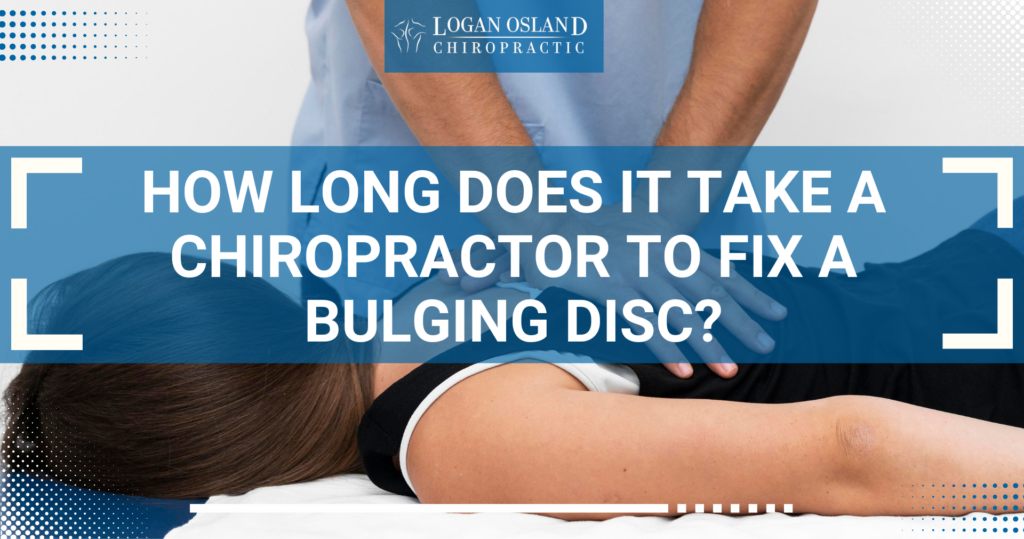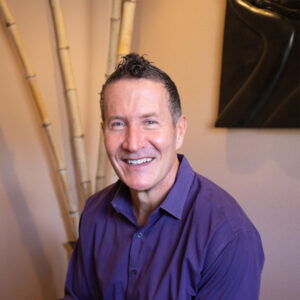The human spine is generally a robust and sturdy structure comprising vertebrae and inter-engaging intervertebral discs. However, the spinal cord can be disrupted under excessive force or sudden trauma, leading to several painful conditions, such as a herniated disc.
A herniated disc can cause chronic pain in your neck and back that can severely compromise your quality of life. The disorder needs medical intervention, but going under the knife for a bulging disc is not the only treatment option. That is where conservative treatment methods like chiropractic care come in.
Let us have a closer look at what problems a herniated disc poses, how effective chiropractic care can be in alleviating symptoms, and how much time you can expect chiropractic care to take to help you obtain relief from this painful condition!
What Is a Herniated Disc?
The spinal column comprises spinal bones, soft tissues, and intervertebral discs. The bones’ function supports the skeleton and allows you to perform basic movements while protecting the body against injuries. The intervertebral discs absorb pressure and serve as cushions between the bones.
The protrusion of an intervertebral disc from its original position in the spinal column is known as disc herniation.
An intervertebral disc comprises an inner soft and spongy disc material, i.e., nucleus pulposus, guarded by a strong outer layer called annulus fibrosis. The jelly-like nucleus can rupture the spinal disc and protrude from its normal position. The protrusion can directly pinch nearby nerve roots, leading to painful symptoms.
Causes and Risk Factors
There are multiple causes and risk factors that can lead to disc herniation. In most cases, a herniated disc is the outcome of age-related wear and tear of the bones, i.e., disc degeneration.
The gradual process makes an individual more vulnerable even while doing daily activities, like lifting moderately heavy stuff.
Researchers note a higher incidence of recurrent disc herniation in the middle-aged population, indicating a clear connection between age changes and disc abnormalities.
Direct trauma, like during car accidents, can also cause herniation. You can sustain a disc injury while lifting heavy objects that put extreme pressure on your back, especially in an improper spinal position.
Other risk factors that increase your likelihood of acquiring disc protrusion include obesity, smoking, genetics, and a sedentary life.
Identifying the Symptoms of a Slipped Disc
Identifying disc herniation early on enables a timely diagnosis and lays the foundation for effective treatment, saving you from chronic pain and debilitation. The most commonly observed symptoms of a herniated disc include:
Pain
A bulging disc can occur at any spinal column level (cervical or lumbar). A herniated disc puts pressure on the surrounding nerve. That pinched nerve manifests as herniated disc pain, which varies between individuals, with some experiencing severe pain while others report bearable discomfort.
A lumbar disc herniation presents as low back pain that can radiate from the buttocks to the legs. On the other hand, a cervical disc herniation limits your neck movement and results in neck pain spreading to your shoulder or arms.
Paresthesias and Weakness
A common symptom of disc herniation is numbness in the legs and arms. Lumbar herniations cause numbness, burning, and tingling sensations in the legs with lower back pain. A cervical herniated disc will often lead to numbness and tingling spreading from your shoulders all the way to the fingers.
Some people also experience muscle weakness due to prolonged spinal nerve impingement.
How Chiropractic Treatment Can Alleviate Symptoms
Fortunately, treating a bulging disc does not mean undergoing surgery or using injections or medications.
Natural, non-invasive methods like chiropractic care are proven effective remedies to treat spinal issues and alleviate associated symptoms. A chiropractor adjusts your spine and the discs to their original position through light movements. Chiropractic pain treatment targets the root cause of the pain, using gentle force to help restore your range of movement to provide lasting relief.
After making a diagnosis and assessing your muscle tone and strength, a chiropractor may apply the following methods to provide herniated disc pain relief:
Flexion-Distraction Technique
It is the most effective chiropractic adjustment, which involves applying light, rhythmic, pumping force to the spine while lying on a table.
Research shows this spinal adjustment effectively improves mobility and decreases pain in patients with lumbar disc degeneration. A 2021 study notes that spinal manipulation imparts immediate effects to patients.
Spinal Decompression Therapy
Spinal decompression is another effective treatment modality readily adopted by chiropractors to manage disc herniation. Decompression takes the pressure off the pinched nerves and provides immediate pain relief by stretching the spine, which enables the herniated disc to return to its correct position.
How Long Does It Take for a Herniated Disc to Heal With Chiropractic Care?
Chiropractic treatment slowly and gradually heals a herniated disc; however, the duration varies for each individual.
While many people might notice relief even with a single session, complete recovery can take several months, depending on the severity of the condition.
With chiropractic help, you can taper painkiller dosage within a few days with improved function and mobility, helping you carry out your daily activities like walking comfortably. However, it could take up to 12 weeks before you can indulge in strenuous activities or for the disc to repair.
Keep in mind that a bulging disc does not subside all of a sudden. Therefore, you need to be patient for the best outcomes.
Benefits of Taking Chiropractic Help
There are numerous benefits to visiting a chiropractic center for disc herniation. Effective chiropractic care allows you to get well without relying on pharmaceuticals and saves you from surgical interventions, which can be painful and require lengthy recovery time. Chiropractic treatment improves posture and flushes out pain from your body.
You can appreciate an increase in the range of motion of joints, not to mention the precious time and money saved with this all-natural treatment. Research shows significant disc protrusion and sciatica pain improvements with chiropractic adjustments without any side effects.
Factors Affecting Healing Rates
Several factors can determine the healing rates of a herniated disc.
The position of the herniation impacts the recovery time. Activity status, smoking, and drinking habits also play a part in disc herniation recovery.
People with sedentary lives and cigarette smokers experience delayed healing and high sugar intake, and underlying comorbidities like diabetes also increase inflammation, slowing recovery.
Obtain Lasting Relief from Herniated Discs With Logan Osland Chiropractic
Finding the right chiropractor can be tricky; however, the highly qualified chiropractors at our state-of-the-art, patient-friendly clinic have your back!
The center aims to abate herniated disc pain through top-notch chiropractic care while educating you about the ideal ways of accelerating recovery. So, don’t delay eliminating your spinal discomfort and visit us to relieve your pain to regain a happy, healthy life! Click here for an appointment!


